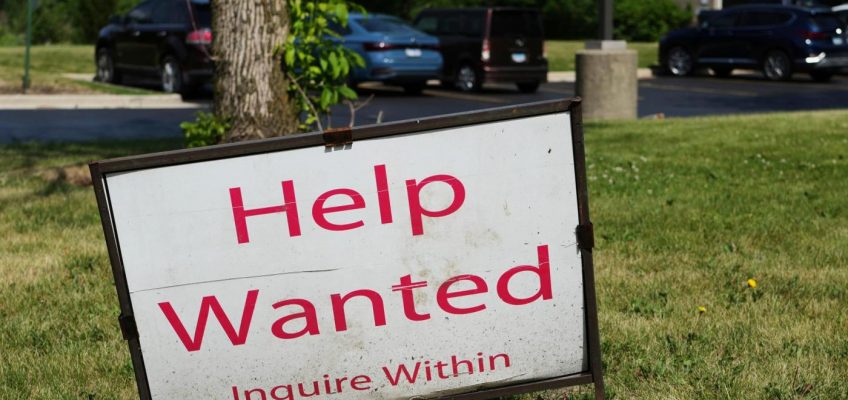By PAUL WISEMAN, Associated Press Economics Writer
The steady slowdown in U.S. hiring likely continued in June as President Donald Trump’s trade wars, federal hiring freeze and immigration crackdown weighed on the American job market.
When the Labor Department on Thursday releases job numbers for last month, they’re expected to show that businesses, government agencies and nonprofits added 117,500 jobs in June, down from 139,000 in May, according to a survey of forecasters by the data firm FactSet.
The unemployment rate is expected to have ticked up to 4.3%, which would be the highest since October 2021 but still low enough to suggest that most American workers continue to enjoy job security.
FILE – Katy Frank, a former computer scientist at the NOAA Great Lakes Environmental Research Lab, who lost her job Thursday, protests outside the John D. Dingell Veterans Affairs Medical Center in Detroit, Friday, Feb. 28, 2025. (AP Photo/Paul Sancya, File)
The U.S. job market has cooled considerably from red-hot days of 2021-2023 when the economy bounced back with unexpected strength from COVID-19 lockdowns and companies were desperate for workers. So far this year employers have added an average 124,000 jobs a month, down from 168,000 in 2024 and an average 400,000 from 2021 through 2023.
Hiring decelerated after the Federal Reserve raised its benchmark interest rate 11 times in 2022 and 2023. But the economy did not collapse, defying widespread predictions that the higher borrowing costs would cause a recession. Companies kept hiring, just at a more modest pace.
But the job market increasingly looks under strain. A survey released Wednesday by the payroll processor ADP found that private companies cut 33,000 jobs last month. “Though layoffs continue to be rare, a hesitancy to hire and a reluctance to replace departing workers led to job losses last month,” said ADP chief economist Nela Richardson. (The ADP numbers frequently differ from the Labor Department’s official job count.)
Related Articles
Today in History: July 3, Union wins Battle of Gettysburg
Judge denies bid by the suspect in Tupac Shakur’s killing for a new trial in a jailhouse fight
Skydiving plane goes off New Jersey runway and crashes into woods, sending at least 15 to hospital
Florida’s ‘Alligator Alcatraz’ detention center is set to receive its first group of immigrants
Judge ends order blocking deportation of family of man charged in Boulder firebomb attack
Employers are now contending with fallout from Trump’s policies, especially his aggressive use of import taxes – tariffs.
Mainstream economists say that tariffs raise prices for businesses and consumers alike and make the economy less efficient by reducing competition. They also invite retaliatory tariffs from other countries, hurting U.S. exporters.
The erratic way that Trump has rolled out his tariffs — announcing and then suspending them, then coming up with new ones — has left businesses bewildered.
Manufacturers responding to a survey released this week by the Institute for Supply Management complained that they and their customers were reluctant to make decisions until they understood where Trump’s tariffs would end up. “That whiplash has to stop and it has to stay stopped,” said Susan Spence, chair of the ISM’s manufacturing survey committee.
Trump’s assault on the federal bureaucracy could also show up in June’s job report. Nancy Vanden Houten, lead U.S. economist at Oxford Economics, expects federal jobs dropped by 20,000 last month, “reflecting a hiring freeze, voluntary quits and retirements.’’ For now, she wrote in a commentary Wednesday, court rulings “have put massive federal layoffs on hold.’’
The president’s deportations — and the threat of them — also are likely to start having an impact on the job market by driving immigrants out of the job market. In May, the U.S. labor force — those working and looking for work — fell by 625,000, the biggest drop in a year and a half.


Leave a Reply